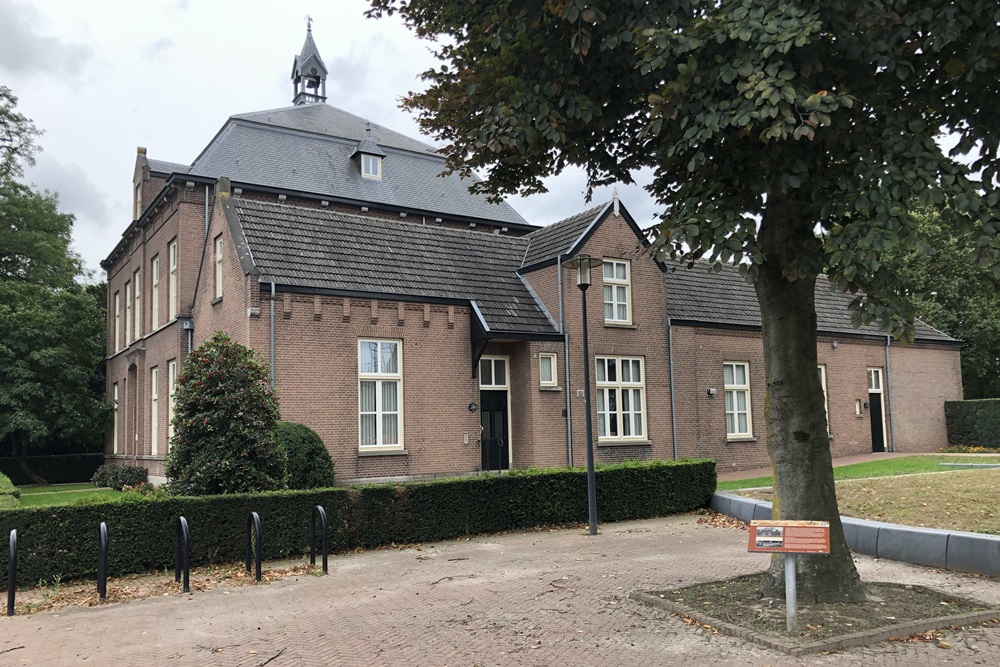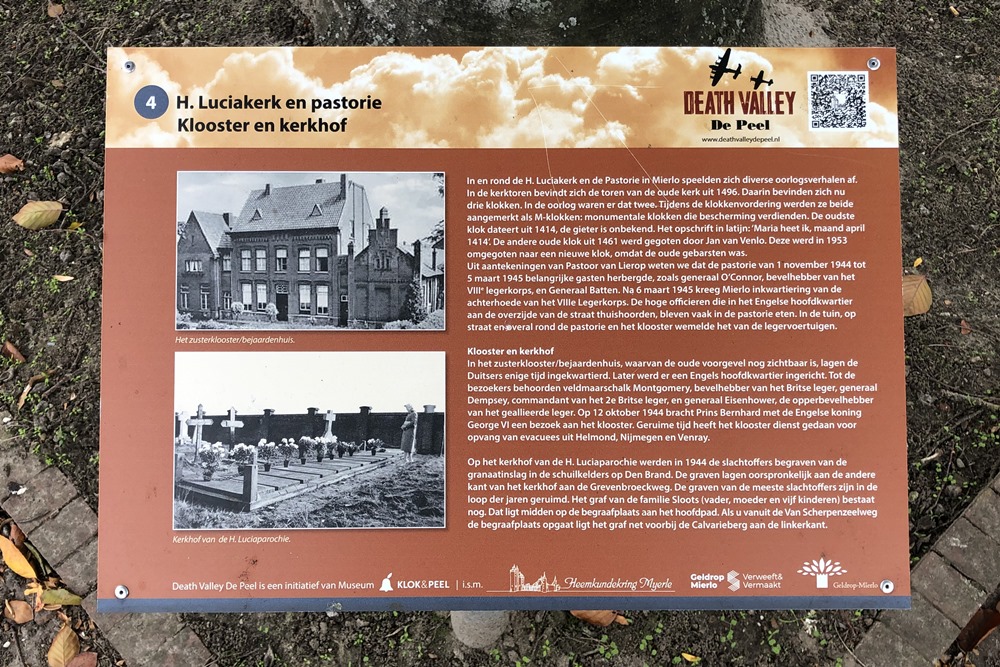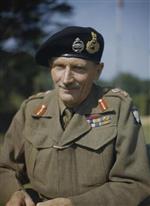Cycling route Death Valley De Peel - St. Lucia Church and rectory Monastery and cemetery (#4)


St. Lucia's church and rectory Monastery and cemetery Various war stories were set in and around the St. Luciakerk and the Pastorie in Mierlo. In the church tower is the tower of the old church from 1496. It now houses three bells. In the war there were two. During the clock claim they were both classified as M clocks: monumental clocks that deserved protection. The oldest clock dates from 1414, the watering can is unknown. The inscription in Latin: 'My name is Marie, month April 1414'. The other old clock from 1461 was cast by Jan van Venlo. This was converted to a new clock in 1953, because the old one was cracked. From notes by Pastoor van Lierop we know that from November 1, 1944 to March 5, 1945, the rectory hosted important guests, such as General O'Conner, commander of the VIIIth Army Corps, and General Batten. After March 6, 1945, Mierlo was quartered from the rearguard of the VIIIth Army Corps. The senior officers who belonged to the English headquarters across the street often stayed for dinner in the rectory. Army vehicles swarmed in the garden, in the street and all around the rectory and the monastery. Monastery and cemetery The Germans were billeted for some time in the sister monastery / retirement home, of which the old façade is still visible. Later an English headquarters was set up. Visitors included Field Marshal Montgomery, Commander of the British Army, General Dempsey, Commander of the 2nd British Army, and General Eisenhower, Commander in Chief of the Allied Army. On October 12, 1944, Prince Bernhard and the English King George VI visited the monastery. The monastery has served for some time to receive evacuees from Helmond, Nijmegen and Venray. [towid]134311,In 1944 the victims of the grenade impact were buried in the cemetery[/towid] of St. Luciaparochie in [towid]134192, the bomb shelters at Den Brand[/towid]. The graves were originally on the other side of the cemetery on the Grevenbroeckweg. The graves of most of the victims have been cleared over the years. The grave of the Sloots family (father, mother and five children) still exists. It is located in the middle of the cemetery on the main path. If you enter the cemetery from Van Scherpenzeelweg, the grave is just past Calvary on the left.
